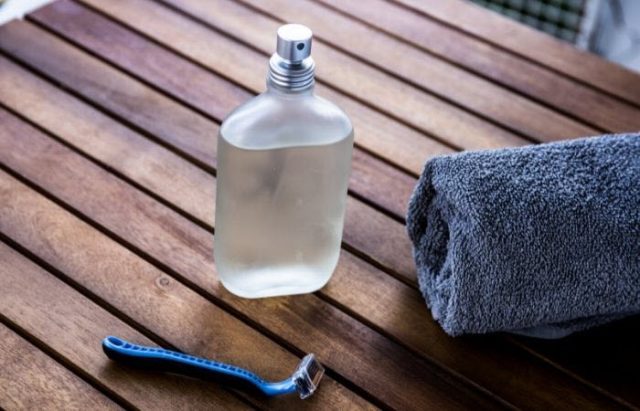Psst: This Is The Sneaky Reason Your Hair Won’t Grow Past A Certain Point
Uh, what gives?

Image by Element5 Digital / Unsplash August 10, 2023 Our editors have independently chosen the products listed on this page. If you purchase something mentioned in this article, we may You do all the right things. You commit to a nightly scalp massage, rub rosemary oil on your hairline, and have a mighty collection of hair-thickening shampoos—and yet, your strands still won’t grow past your shoulders, collarbones, or whatever length you so desperately crave. Uh, what gives? Well, let me point out that hair growth cycles are genetic (meaning, your hair might plateau at a certain length, and there’s not much to do about it); but according to celebrity hairstylist Tom Smith, you might also be dealing with some sneaky micro-breakage. 
Advertisement
This ad is displayed using third party content and we do not control its accessibility features.
How can you tell if micro-breakage is thwarting your hair growth goals? See below for Smith’s guidance. What is micro-breakage?
“Micro-breakage is the invisible damage that happens to your hair without you noticing,” Smith writes on TikTok. “Even if your hair is growing from the roots, it might seem like it isn’t getting longer because of breakage on the ends.”
So your hair growth efforts are not futile: Your follicles are churning out new baby hairs; they’re just breaking off before they reach the end of your mane. It’s more common than you think!
How do you know if you’re dealing with micro-breakage, you ask? Just take a look at your shed hairs: "If the strands falling out are not as long as your hair's length and are much shorter, brittle, and broken into several pieces or split, your hair is breaking," celebrity hairstylist Annagjid "Kee" Taylor says regarding hair breakage.
The difference might be very slight—hence the term, micro-breakage—but try to notice any snapped, brittle hairs that fall out when you detangle or style. “Your hair is constantly in a cycle of growing and shedding,” Smith adds, but if you have shorter strands that shed rather quickly, that’s a surefire sign to prioritize special hair care.
Advertisement
This ad is displayed using third party content and we do not control its accessibility features.
What to do about it
So you have micro-breakage. Don’t fret! Smith offers a slew of tips to get your mane growing long and strong. Below, a few highlights:
“Be careful with your hair,” Smith writes, especially on the ends. Daily wear and tear—harsh brushing, towel-drying, and the like—can wreak havoc on your tresses and easily lead to breakage. You want to be extra gentle on those breakage-prone strands, protecting it from physical stressors.
On a similar beat, try to minimize heat styling as much as possible while you baby your strands back to health. Heat harms your hair, robbing it of moisture and weakening the keratin structure, so give your hot tools a break for the time being, if you can.
Advertisement
This ad is displayed using third party content and we do not control its accessibility features.
2.
Use strengthening & moisturizing treatments
“Layer on serums and oils to keep [the ends] supple, and use strengthening treatments regularly,” Smith adds. Serums and oils work to hydrate the stands, while strengthening protein treatments help rebuild broken hair bonds—and you want a healthy balance of both to repair micro-breakage.
See, protein treatments are great for sealing down the cuticle, but if you overdo it, you may wind up with hair that's even more brittle and strawlike. (It’s a concept called protein overload, and we explain it in more detail here.)
Smith recommends snagging bond-building treatments from Olaplex and K18, but you also want to introduce enough moisture to balance out the ratio; look for hydrators like glycerin, hyaluronic acid, aloe, as well as a blend of oils to nourish the strands—feel free to also check out our favorite shampoos and conditioners for dry hair.
Finally, it’s important to consider an inside-out approach. “Positive reports also come from supplementation with biotin and other hair vitamins,” Smith explains. Biotin, in particular, is involved in keratin production1 (aka, the main protein in hair), and deficiencies are connected to loss and breakage. Biotin deficiency2 in the U.S. population is rare, but some folks swear by the buzzy B vitamin for longer locks.
Other hair supplements lean on antioxidant nutrients and botanicals such as vitamin C, E, turmeric, and CoQ10, among others, to fend off oxidative stress and free radical damage. You can find more info on hair vitamins here, plus our favorite high-quality options.
Advertisement
This ad is displayed using third party content and we do not control its accessibility features.
The takeaway
Micro-breakage is way more common than you think. Essentially, it’s the breakage in your hair that might seem invisible to the naked eye but keeps you from achieving your hair growth goals. Standard hair care lessons will help, especially some T.L.C. on those ends. In other words, keep up the scalp massages to stimulate growth—just don’t forget about caring for the strands you already have.
Advertisement
This ad is displayed using third party content and we do not control its accessibility features.

 Kass
Kass 

































